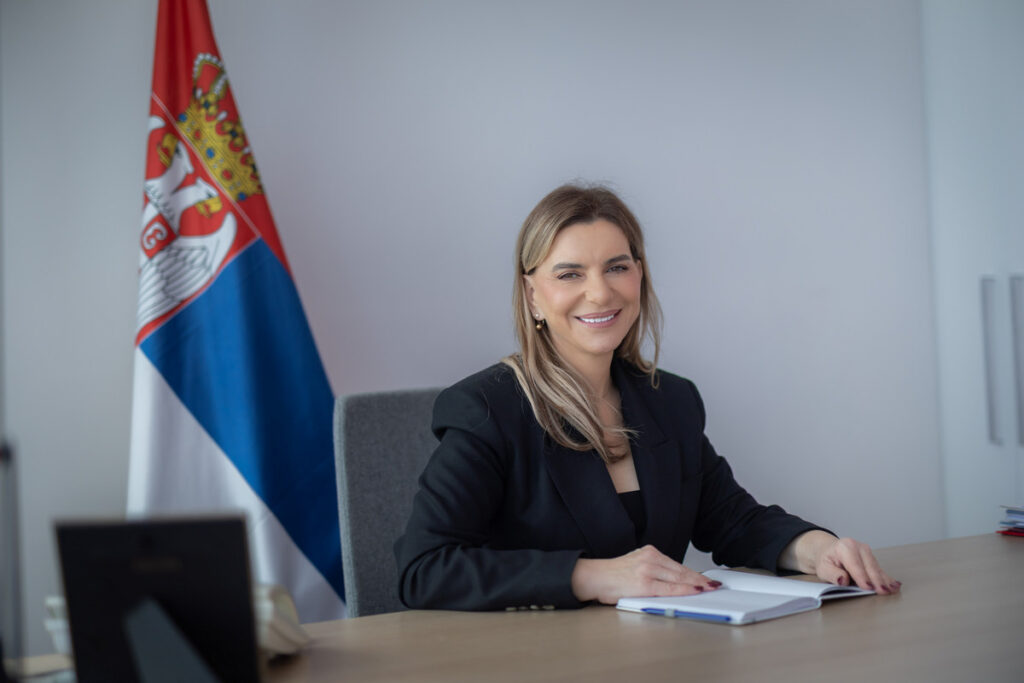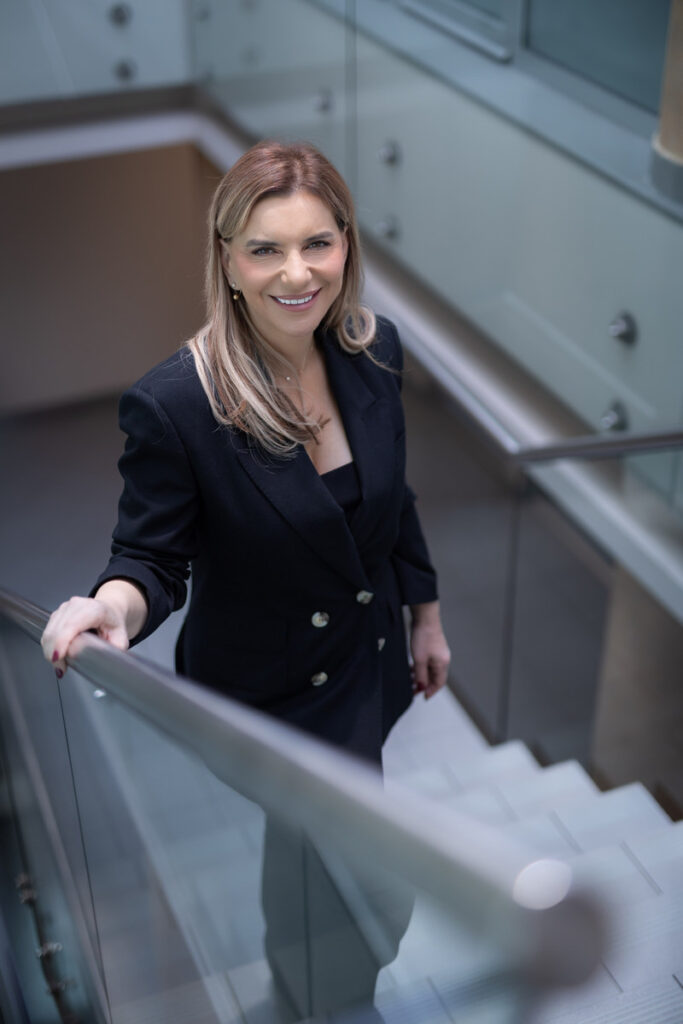Advancing innovative treatments through strategic investment and international collaboration

FEATURED INTERVIEW
Dr Sanja Radojević Škodrić
Director of the Republic Health Insurance Fund
Dr Sanja Radojević Škodrić, Director of the Republic Health Insurance Fund, speaks about Serbia’s accelerated efforts to expand access to innovative therapies for rare diseases, supported by record state investments and strengthened cooperation with international partners.
How does the National Health Insurance Fund plan to accelerate the evaluation and inclusion of innovative therapies for rare diseases on its drug lists?
Before answering that question, I would like to remind you that over the past few years, we have seen unprecedented progress in the treatment of rare diseases, as reflected in the growing number of people with rare diseases receiving therapy and the increasing number of different diagnoses. All of this has been made possible because the state leadership, with President Aleksandar Vučić at the helm, recognised the need for the state to become involved in the treatment of rare diseases. In line with this position and policy, the budget for rare diseases has been continuously increasing since its establishment in 2013. It has now reached 10.2 billion dinars, which is 78 times more than it was 12 years ago. This budget growth has enabled an increasing number of people to be treated at the NHIF’s expense, and that number now stands at 930 patients, up from eight initially. Additionally, it should be noted that medicines for rare diseases are among the most expensive in the world, with prices reaching several million euros, such as the medication for spinal muscular atrophy, which is provided in Serbia at the expense of compulsory health insurance. The challenge is not only to secure financial resources for therapy, but also the fact that treatment exists for only five per cent of these diseases. In comparison, for the remaining 95 per cent — which is not a small number of patients — appropriate care must also be ensured.
Regarding the procedure through which people with rare diseases receive therapy, medicines are provided from available budget funds based on a decision by the NHIF’s commission for rare diseases, which is composed of the most eminent medical experts. Patients may also be approved for therapy that is not registered in Serbia. In such cases, they do not wait for the medicine to be registered in our country; immediately upon the drug’s registration with the European Medicines Agency or the US Food and Drug Administration, they receive the therapy.
The budget for rare diseases has grown 78-fold, enabling therapy for 930 patients today
What specific criteria does the Fund use to decide which rare diseases and which therapies are prioritised for coverage (e.g. prevalence, disease severity, costs, quality of life)? Is there a transparent list of candidates that is regularly reviewed and publicly released?
As I mentioned, therapy is determined by the NHIF Commission for Rare Diseases, which is composed of the most eminent experts from various fields of medicine who are directly involved in treating rare diseases. For each calendar year, this commission first reviews requests for continuation of therapy for individuals already receiving treatment based on the Commission’s decision. Then it considers all submitted requests for initiating treatment for patients with rare diseases. All decisions are made solely based on medical documentation and medical criteria, in accordance with the available financial resources. For certain rare diseases, such as spinal muscular atrophy, all patients identified through mandatory newborn screening as having this condition receive therapy, and all three registered treatments are provided at the NHIF’s expense.

How many patients are currently referred for treatment abroad at the Fund’s expense? What is the time frame from the receipt of the approval request, and what obstacles (budgetary, administrative, cooperation with foreign institutions) does the Fund face in such cases?
The NHIF refers insured individuals for treatment abroad in line with prescribed medical indications when treatment and diagnostics cannot be performed in Serbia, and when medical experts determine that successful treatment or diagnostics is possible in a specialised healthcare institution abroad. The referral procedure is straightforward. First, the expert medical council of the relevant domestic healthcare institution treating the patient must propose the patient’s referral for treatment abroad and submit a request to the Fund along with this proposal. The NHIF then carries out the remaining steps of the referral procedure. The Fund covers the full cost of treatment at the foreign healthcare institution and, if necessary, also approves an accompanying person for the patient, covering transport costs.
Since the beginning of this year, 505 patients have been referred abroad at the NHIF’s expense, including 250 children and 40 adults for treatment, and 215 children for rare-disease diagnostics.
The state is now allocating record levels of funding for treatment abroad, especially for the treatment of children, so we do not face financial challenges when referring an insured person for clinically justified treatment abroad that cannot be performed in Serbia. The challenges are of a different nature and relate to the capacity of foreign hospitals and the speed at which they can accept our insured individuals in urgent cases. The biggest challenge is the impossibility of referring patients for cadaveric transplantations abroad because international transplantation organisations operate on the principle of organ exchange. Since we have had no organs to offer in exchange, foreign clinics refuse to accept patients from Serbia.
Serbia is among the first countries to secure cutting-edge gene therapies, even before EMA approval
How does the Fund, together with the state, plan to cover costly therapies for children with very rare diseases (e.g. “butterfly children”, gene therapies) that cost millions of euros? Is there a reserve fund, international support funds, changes in budget structure, or partnerships with pharmaceutical companies?
Serbia is among the first countries in Europe and the world to secure an expensive gene therapy for “butterfly children” even before the European Medicines Agency registered the medicine. This therapy is not suitable for all types of epidermolysis bullosa, meaning it does not apply to all patients affected by this condition. Currently, eight patients are undergoing treatment with gene therapy for epidermolysis bullosa. The aim is always the highest one — to treat all patients — and this is why we strive to develop a partnership-based relationship with pharmaceutical companies that hold marketing authorisations for medicines for rare diseases, to achieve the best possible conditions for securing therapy for as many patients as possible.
In what ways does the Fund collaborate with international organisations, research institutions, patient associations, and pharmaceutical companies to reduce therapy costs, increase transparency, and ensure the long-term sustainability of access to medicines for rare diseases?
The Fund’s position is such that we cooperate with everyone, and most closely with patient associations, from whom we receive first-hand information about the challenges they face, as well as their needs and priorities. Representatives of these associations, along with physicians, participate in the work of the Commission for Rare Diseases, and outside of the Commission, we maintain regular communication with them. They are, in fact, the link between the Fund and the patients. The NHIF is continually improving its communication with associations to expand the scope of rights for individuals with rare diseases, encompassing not only medicines but also diagnostics, medical-technical aids, rehabilitation, and other entitlements within the Fund’s remit.
What are the key indicators used by the Fund to measure success in increasing access to innovative therapies and treating rare diseases (e.g. number of patients who received treatment, waiting times, reduction of costs per patient)?
The primary indicator is the budget for rare diseases, which has grown year after year — from 130 million dinars in 2013 to 10.2 billion dinars this year (a 78-fold increase). From this budget, other indicators follow, such as the rising number of patients treated at the state’s expense. Currently, 930 people with rare diseases are receiving treatment funded by the state, whereas 12 years ago, only eight patients were treated. The number of diagnoses for which the state provides medication has increased from two to 40. This constant budget growth not only creates an opportunity for new patients to receive therapy, but also guarantees the continuation of treatment for all those already receiving state-funded therapy.
The budget for rare diseases is not the only source of financing, as rare diseases are also treated through medicines on the drug list and medication outside the list procured by healthcare institutions. As a result, the total funds are significantly higher, amounting to 20 billion dinars last year.
Are the recent global media reports about revolutionary therapeutic breakthroughs in the fight against severe diseases – various cancers, HIV, multiple sclerosis – grounded in truth? Are we on the verge of the long-awaited medical revolution?
We are fortunate that science and technology are advancing rapidly today, and new medicines are emerging almost daily. All this research and these clinical trials represent great hope for patients, especially those suffering from rare diseases. As you know, more than 7,000 different rare diseases have been identified, and only about five per cent of them have an available therapy. However, all of this takes time — the research itself is lengthy, and even once a medicine is finally developed, additional time is needed for its registration, that is, for obtaining authorisation. Our role is to monitor these developments and respond promptly, ensuring that we can secure therapy for those who need it as soon as possible.